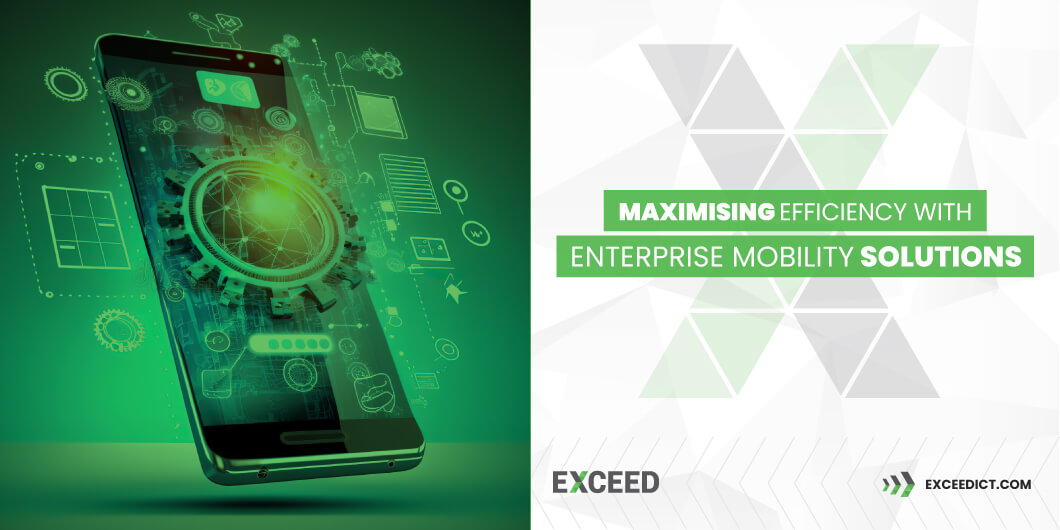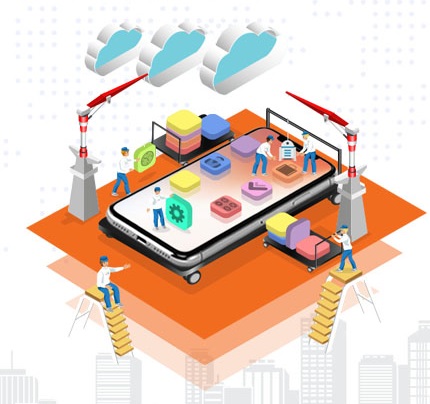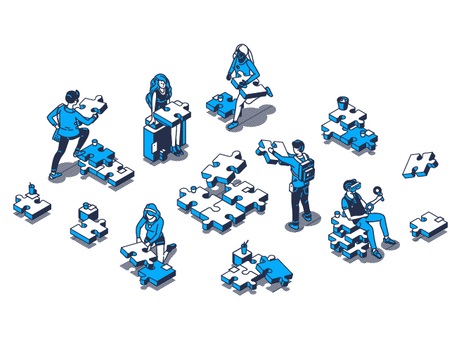
Australian businesses are increasingly turning to mobile-first strategies to boost productivity, streamline operations, and support a modern, flexible workforce. Enterprise Mobility Solutions (EMS) have become a key driver in this transformation, enabling employees to securely access corporate data, applications, and systems from virtually anywhere.
As remote work, hybrid work, and field operations continue to grow, having the right mobility framework in place is essential not only for productivity but also for security, compliance, and long-term business resilience.
What Are Enterprise Mobility Solutions?

Enterprise Mobility Solutions refer to the technologies, tools, and policies that allow employees to access business systems, data, and applications using mobile devices such as smartphones, tablets, laptops, and even IoT devices.
The goal is simple: give staff the flexibility to work securely from anywhere without compromising the organisation’s data security or performance.
These solutions bring together device management, application management, identity control, data protection, and remote access capabilities into one unified system usually managed through Enterprise Mobility Management (EMM) or Unified Endpoint Management (UEM) platforms.
With more businesses shifting to hybrid work environments and field-based roles becoming more digital, EMS is no longer optional but a crucial part of modern IT infrastructure.
Key Components of Enterprise Mobility Solutions
Mobile Device Management (MDM)
MDM forms the foundation of enterprise mobility. It gives IT teams centralised control over mobile devices, ensuring they remain compliant with company policies.
Key features include:
- Device enrolment and configuration
- Remote lock and wipe capabilities
- OS updates and security enforcement
- Lost or stolen device protection
MDM is especially important for organisations managing large fleets of mobile devices, including company-owned and Bring Your Own Device (BYOD) environments.
Enterprise Mobility Management (EMM)
EMM builds on the fundamentals of MDM but expands to include application, content, and identity management, providing a more holistic approach to mobility.
EMM includes:
- Mobile Application Management (MAM)
- Mobile Content Management (MCM)
- Identity and Access Management (IAM)
This layered approach enables businesses to secure not just the device, but the apps and data that reside on it.
Unified Endpoint Management (UEM)
UEM takes mobility one step further by managing all endpoints including desktops, laptops, smartphones, tablets, and IoT devices from a single dashboard.
Benefits include:
- A simplified management environment
- Consistent security policies across all devices
- Reduced IT workload
- Better visibility over the entire fleet
UEM is rapidly becoming the standard for medium-to-large organisations.
Mobile Application Management (MAM)
MAM focuses on controlling and securing corporate apps independent of the device. This is particularly valuable in BYOD environments as it protects business data without intruding on personal usage.
Key features include:
- App distribution and updates
- App-level security policies
- “Containerisation” to keep business and personal data separate
Mobile Content Management (MCM)
MCM ensures employees can securely access, share, and manage corporate documents from any device.
Capabilities include:
- Secure document repositories
- Access controls
- Data loss prevention (DLP) policies
- Encryption for files in transit and at rest
Identity and Access Management (IAM)
IAM ensures the right people are accessing the right information using secure authentication methods.
Features include:
- Multi-Factor Authentication (MFA)
- Single Sign-On (SSO)
- Role-based access control
- Conditional access policies
IAM strengthens security while providing a seamless user experience.
Core Functions of Enterprise Mobility Solutions

EMS platforms are designed to support both security and productivity. Core functions include:
- Device monitoring, tracking, and compliance enforcement
- Application deployment and updates
- Secure remote access to systems and files
- Data encryption and protection
- Communication and collaboration tools
- Real-time reporting and analytics
These functions ensure the organisation maintains control over its workforce mobility without compromising performance or data security.
Benefits of Implementing Enterprise Mobility Solutions
Improved Employee Productivity
Staff can access corporate systems anytime, anywhere whether they’re travelling, working from home, or on-site with clients. This leads to:
- Faster response times
- Quicker approvals
- Improved decision-making
- Reduced downtime
Enhanced Data Security
EMS provides strong protection against data breaches and cyber threats through:
- Encryption
- Access controls
- DLP policies
- Remote wipe capabilities
This is critical in an era where mobile threats are rapidly increasing.
Greater Business Agility
Enterprise mobility helps businesses innovate faster and adapt to changing conditions, such as:
- Sudden shifts to remote work
- New market opportunities
- Changing customer expectations
Mobility gives organisations the flexibility to scale quickly without major infrastructure changes.
Cost Savings
Enterprise mobility reduces operational costs by:
- Minimising IT overhead
- Enabling remote troubleshooting
- Avoiding device replacement through remote management
- Reducing reliance on physical office spaces
Better Collaboration and Data Accuracy
Real-time communication tools ensure employees stay connected and aligned. Meanwhile, instant data access improves accuracy across departments such as sales, service, logistics, and management.
Why Enterprise Mobility Matters for Australian Businesses

Australian workplaces have undergone significant changes in recent years, with hybrid work models becoming the norm across most industries. At the same time, cybersecurity threats continue to rise, and customers expect faster service than ever before.
Enterprise mobility solutions give organisations the tools to:
- Support flexible work arrangements
- Strengthen cybersecurity posture
- Improve customer experience
- Gain a competitive advantage
Whether you’re running a large enterprise, a field-service organisation, or a growing business targeting national markets, mobility is now essential not a luxury.
Best Practices for Deploying Enterprise Mobility Solutions
To get the best results, businesses should:
Assess Organisational Needs
Identify challenges, device requirements, application dependencies, and security risks.
Establish Clear Policies
Create guidelines for device usage, data handling, BYOD participation, and acceptable use.
Choose the Right EMS or UEM Platform
Select a solution that:
- Integrates with existing systems
- Scales with your business
- Offers strong security features
Prioritise Employee Training
User adoption is key. Provide training to help employees understand how to use tools securely and efficiently.
Monitor and Evaluate Continuously
Regularly track compliance, device health, and usage metrics to identify areas for improvement.
Common Challenges and How to Overcome Them
- Security risks from remote access – Implement MFA, encryption, and conditional access
- Managing diverse device types – Use UEM for unified control
- Ensuring user adoption – Provide training and clear policies
- Integrating legacy systems – Choose flexible platforms with strong integration support
The Future of Enterprise Mobility
The future of EMS is being shaped by new technologies such as:
- Zero Trust security models
- Next-generation mobile connectivity (5G)
- Cloud-first business environments
- Advanced analytics and predictive reporting
As businesses continue to digitise, enterprise mobility will become even more central to operational success.
Conclusion
Enterprise mobility solutions are essential for modern Australian businesses looking to stay competitive, productive, and secure. By integrating devices, apps, data, and access controls into a unified system, EMS empowers staff to work efficiently from anywhere while ensuring corporate data remains protected.
With the right mobility strategy and tools in place, organisations can unlock greater productivity, support flexible work environments, reduce operational costs, and strengthen their cyber resilience.
Call us on 1300 832 639 or simply search “Exceed ICT” on Google Maps to find a location near you and connect with our team today.
We also provide
We also provide Expense Management, Telecoms Expense Management, Device Deployment, Mobile Fleet management, Telstra enterprise Mobility, Telstra mobility Managed Services, Improve Business Core values, Business Consulting, Cryptoloc, Network Management, Telstra Expense Management and many more Services. Check our Services And Solutions.


